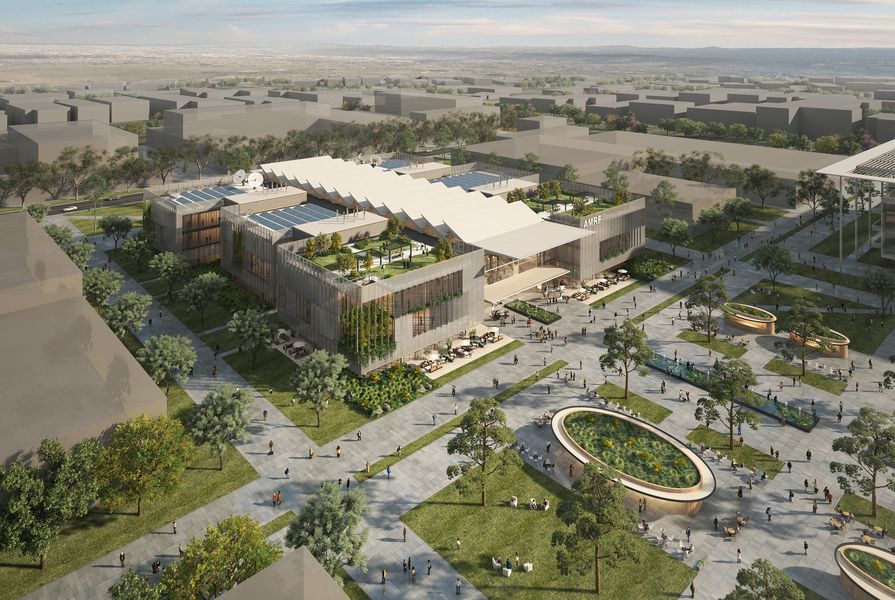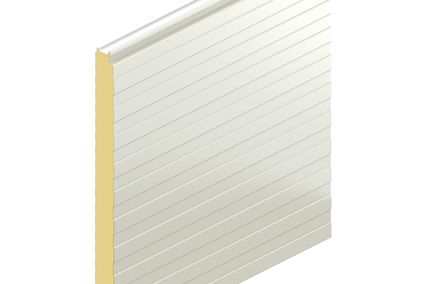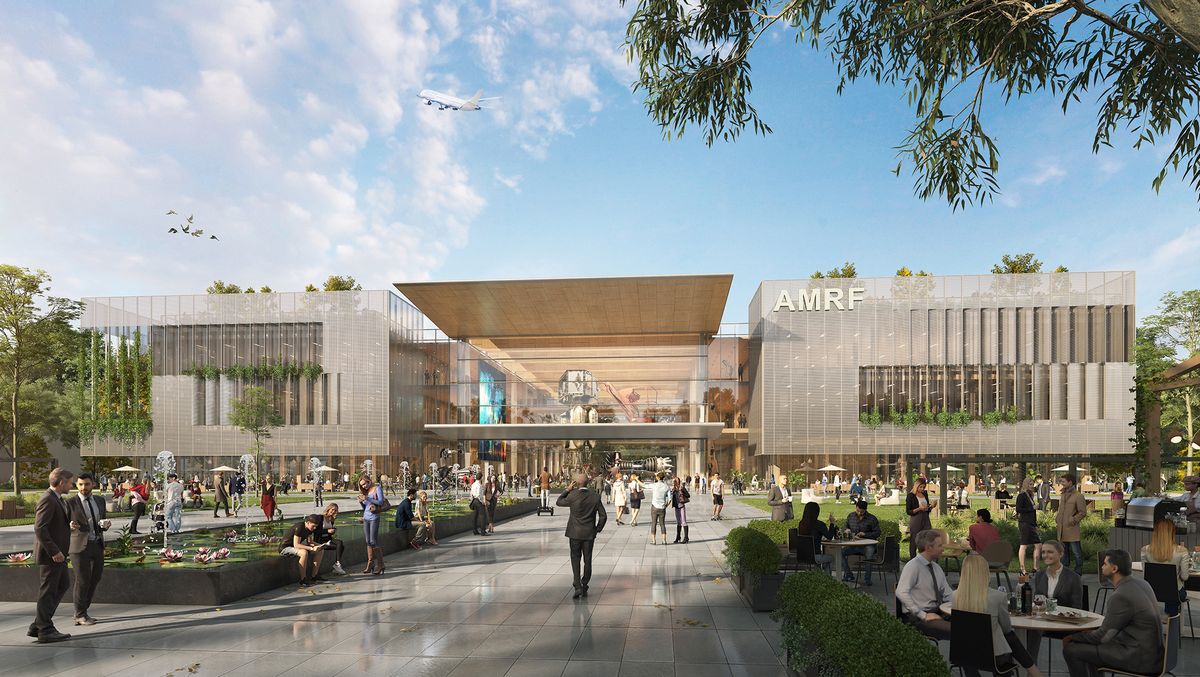The NSW government has announced it will build a 13,000-square-metre Advanced Manufacturing Research Facility at the centre of the Western Sydney Aerotropolis as it releases draft precinct plans for the mammoth city-making project.
To be built near the proposed CSIRO headquarters, the research facility is expected to include 3D printers, next-generation computing, and interactive spaces purpose built for advanced manufacturing, aerospace and defence. Architectus has prepared concept images of the facility.
“The facility will encourage researchers to work collaboratively by providing flexible spaces where business, industry and government can test great ideas and take them from a concept to a reality,” said the minister for Western Sydney, Stuart Ayres.
The government will produce a business case for the centre and seek expressions of interest from private firms. It will draw on the experience of the University of Sheffield’s Advanced Manufacturing Research Centre in the UK, which is a foundation partner of the Aerotropolis.
The Aerotropolis Core metropolitan centre.
Image: Hassell
“There is already plenty of interest in the AMRF and the Western Parkland City Authority (WPCA) is speaking to businesses looking to take part in the facility, including several large international companies as well as local Western Sydney manufacturers,” said Ayres.
The announcement comes as draft precinct plans are placed on public exhibition for the constituent parts of the Aerotroplis: the Agribusiness precinct, the Aerotrpolis Core, Wianamatta-South Creek and Badgerys Creek precincts, and the Northern Gateway.
The Aerorpolis Core will act as the CBD of the city, “forming a complementary centre to the metropolitan cluster of centres including Penrith, Liverpool and Campbelltown.” It will accommodate 50,000 to 60,000 jobs and up to 24,000 residents by 2056, according to government projections. The adjacent Badgerys Creek precinct will be entirely focussed on employment, catering to commercial and high-technology industries, as well as logistics. And the Wianamatta-South Creek precinct will accommodate a range of environmental and recreation functions. Hassell, Hill Thalis Architecture and Urban Projects and Studio Hollenstein have together prepared the draft plan covering theses preceincts.
Studio Hollenstein has also prepared the draft plan for the Agribusiness precinct, which will aim to support the production of fresh produce and pre-prepared consumer foods while achieving ongoing conservation outcomes. It’s anticipated to accommodate up to 5,400 jobs by 2036.
“The Agribusiness precinct draws upon the agricultural and horticultural history of the area, continuing to provide food security and supplying Sydney and export markets,” state’s Studio Hollenstein’s draft plan. At the centre of the precinct, high on a ridgeline, will be Luddenham Village, which will be “fully connected” to local, district and regional centres by transportation and parkland networks.
View across Duncans Creek reservoir parkland in the Agribusiness precinct.
Image: Studio Hollenstein
The draft plan for the Northern Gateway, meanwhile, has been prepared by Hill Thalis. The Northern Gateway precinct is to the immediate north of the major entry to the new Western Sydney Airport, adjoining the Wianamatta-South Creek precinct to the West and the Agribusiness to the south. “The precinct will become a hub for manufacturing, warehouse and distribution functions, while the inclusion of a new metro station in the proposed Science Park will offer scope to create a vibrant and well-connected mixed-use strategic centre,” states the draft plan.
The government also announced that a Special Infrastructure Contribution would be charged on private development in the Aerotropolis to ensure new projects would help roads, active transport, schools, and open space to 2056. The Greater Sydney Commission has developed a Place-based Infrastructure Compact to detail what infrastructure will be required to build the new city. “The new Western Parkland City could need as much as $100 billion in infrastructure over 20 years which will support a record jobs boom of more than 200,000 new jobs across Western Sydney,” Ayres said.
“Nearly 100,000 of those new jobs will be clustered around Western Sydney International Airport in industries such as aerospace and defence, manufacturing, healthcare, freight and logistics, agribusiness, education and research.”
The precinct plans, the proposed Special Infrastructure Contribution policy and the Place-based Infrastructure Compact are all on public exhibition until 18 December.

























